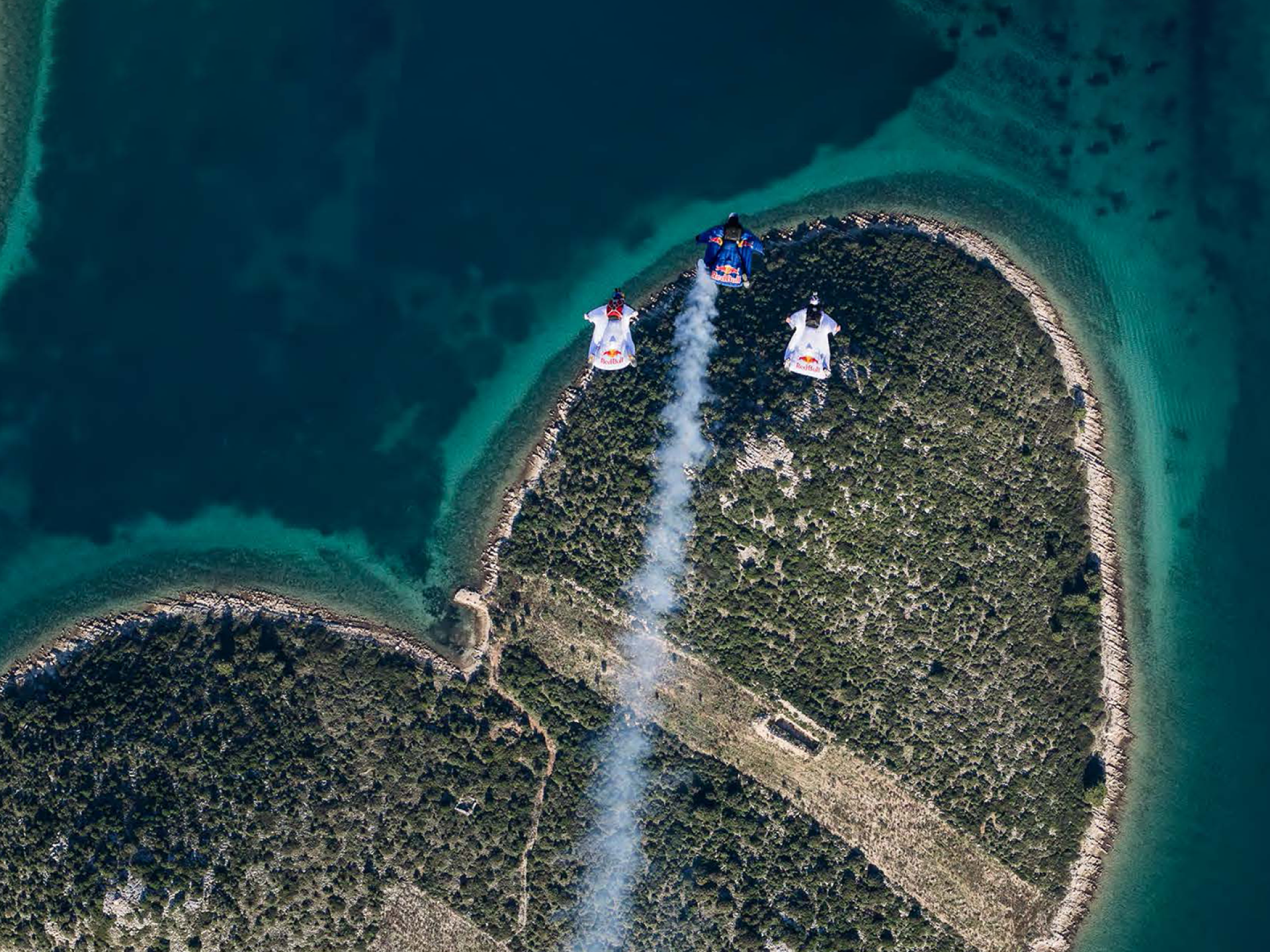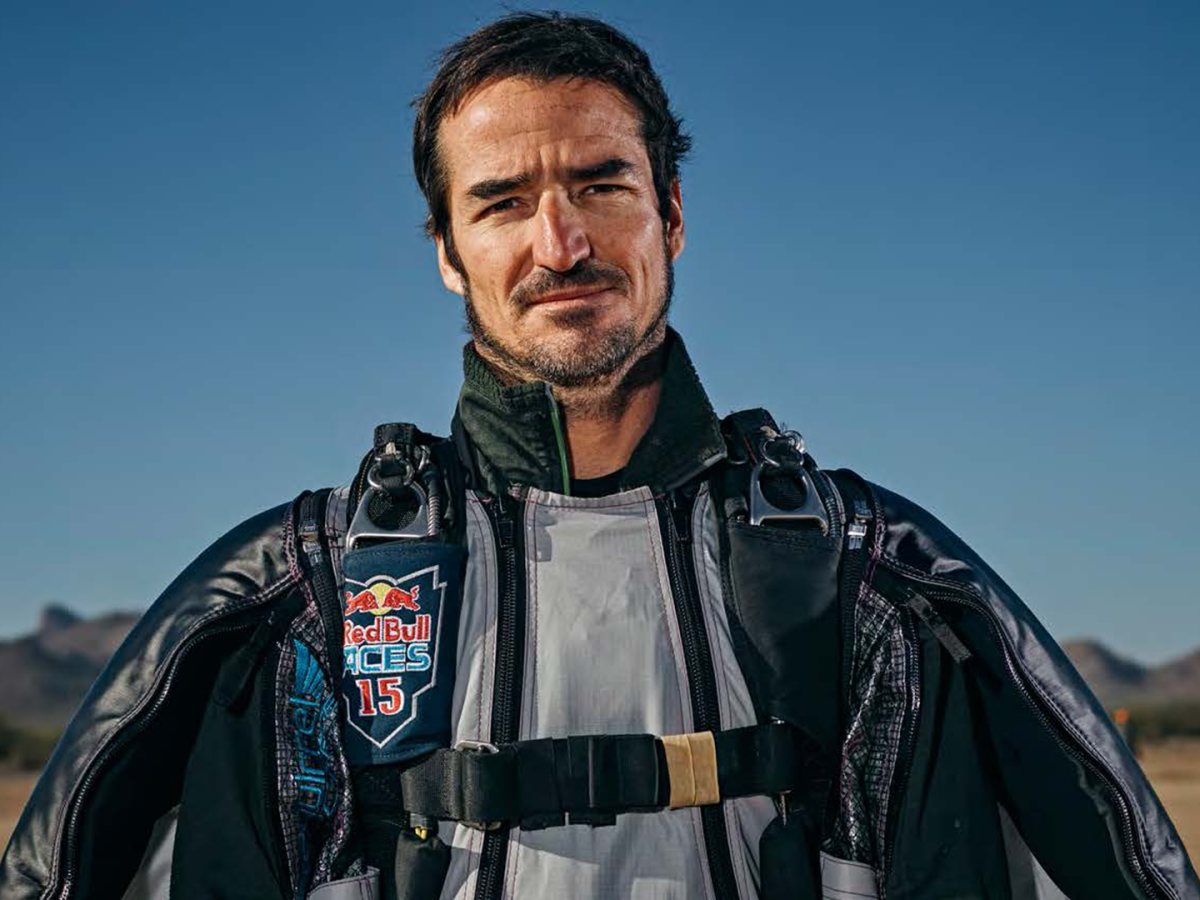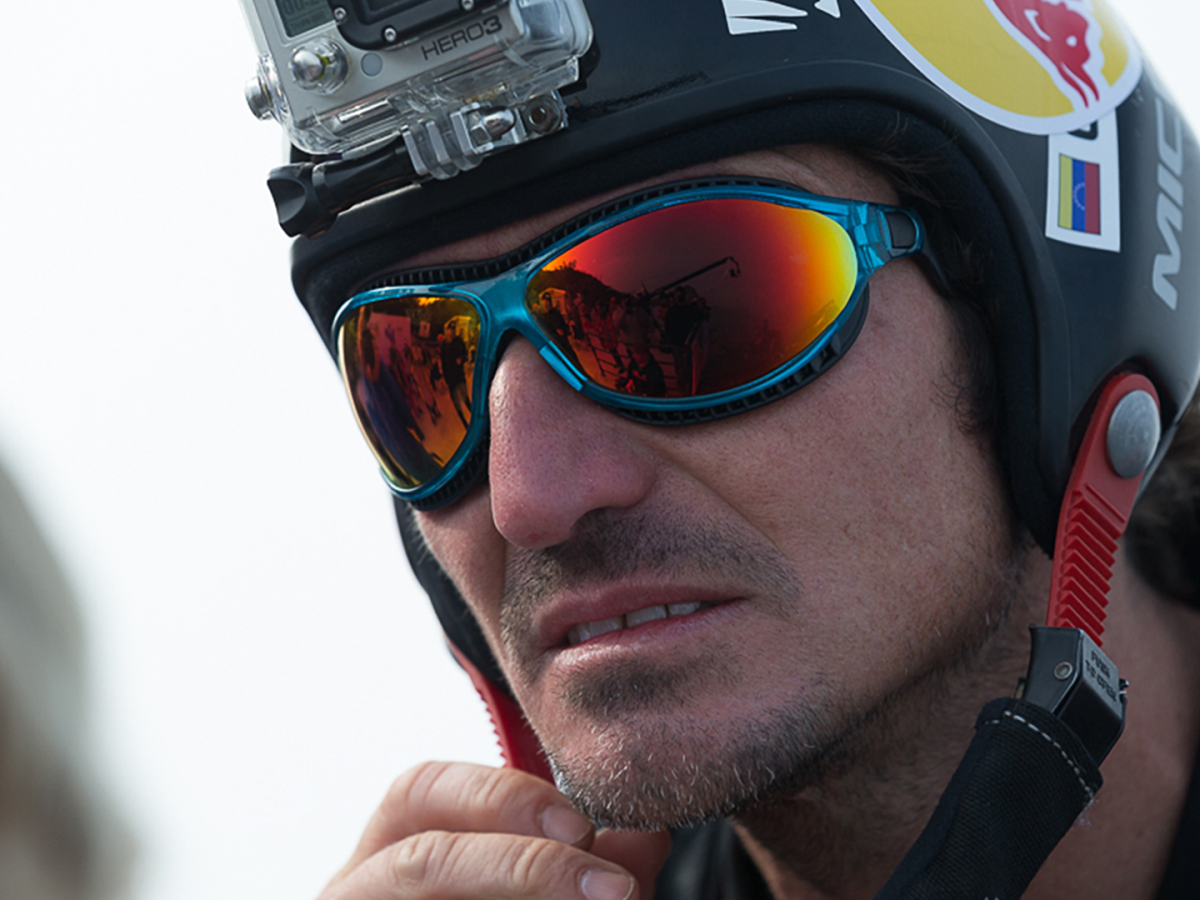April 19, 2018
The new Icaruses

This article was originally published in Populous Magazine, our biannual publication featuring news, information, and trends from the worlds of sport, entertainment, and major public events. Find out more, and sign up to receive a free copy, here.
Dressed in wingsuits, they jump off mountains and swoop just metres from cliff faces and treetops. It’s called proximity flying. Dominic Bliss discovers what drives these daredevils to such extremes.
Icarus would have been envious. Had this doomed character from Ancient Greek mythology observed modern-day wingsuit flyers in action, he wouldn’t have believed his eyes. He’d have witnessed them swooping through the sky at speeds up to 200mph (320kph) in baggy nylon suits, before deploying their parachutes and landing safely (unlike him) on the ground. No sign of feathers or wax these days.
Wingsuit flying is one of those sports that astonishes you with its daredevilry. You can’t help but marvel at the courage – often the recklessness – of these flyers. Wearing a helmet, goggles, usually a GoPro camera, and an oversized suit that makes them resemble a flying squirrel, they cover huge distances at breakneck speeds. Some jump out of aeroplanes (wingsuit skydivers), while other leap off cliff ledges (wingsuit BASE jumpers). The most dangerous version of all, making even Icarus’s flight look pedestrian, is called proximity flying. This involves swooping down the sides of cliff faces, just metres away from mountain ridges, across the top of tree canopies, and twisting and turning between lines of trees and through gullies.
The most accomplished (or insane, depending on how you look at it) have flown through mountain crevices with just a few metres’ leeway either side. They’ve landed on the surface of lakes without deploying their parachutes. Some have even leapt off mountain peaks, before swooping into the cargo door of a moving aeroplane.
Carlos Pedro Briceno is a Venezuelan wingsuit and skydiving instructor based in Florida. He makes around 500 wingsuit flights in an average year, mainly from aeroplanes in the skies above Florida, but also off mountains in the American Southwest. He gets his greatest thrills from proximity flying.
“Nothing compares with it,” he told Populous magazine. “You have the reference of flying really close to things, giving you that feeling of speed. Sometimes you can touch the trees with part of your body. I try not to get too close. There might be something you’re not expecting. That can be deadly, for sure.”
Despite his hazardous hobby, Briceno does his utmost to avoid deadly situations, planning and reconnoitring his flight paths with meticulous care. As far as possible, he will hike up the mountain routes he plans later to glide down, although on the steeper sections this is often impossible. He consults Google Earth and the YouTube videos of wingsuiters who have flown before him.
Obstacles such as electricity pylons, cable cars, ski lifts, and protruding trees or rocks can obviously be lethal. Take the case of American wingsuiter Jeb Corliss. In 2012, halfway through swooping down South Africa’s Table Mountain, he clipped his left foot on an outcrop of rock, flipped over, deployed his emergency parachute, but broke both legs in the ensuing crash. “I impacted flat, solid granite at 120mph and bounced,” is how he described his near-death experience.
Briceno has fortunately never crashed himself. His nearest miss was a couple of years ago, near the French ski resort of Chamonix, while flying through a narrow gorge. Approaching a sharp bend, he started manoeuvring far too late so that, as he turned, his feet drifted towards the wall of the gorge. He clipped them on the branch of a tree; only lightly but, at flying speed, that could easily have been enough to crash.
“When I felt myself going close to the wall, I didn’t panic,” he explains. “But I did think: ‘I’ve f**ked it up. This is the moment I’m going to die.’ In proximity flying, any mistake can be a really bad accident, and most of the time, it takes your life. There are a few guys who have crashed into trees and survived, but it’s very rare.”
Briceno has witnessed death many times. He says around a score of his wingsuiting or BASE jumping friends and acquaintances have met their end pursuing the sport they love. One of these was Alexander Polli, alongside whom Briceno starred in a recent feature film about wingsuit flying called Base. The film’s release was delayed after Polli crashed into a tree and died while wingsuiting (not during filming) near Chamonix in 2016. Briceno had been on the same flight – down the Couloir Ensa – with Polli.
Seeing death so often and up so close has given Briceno a strong belief in fate. He vividly recalls the morning Polli died. “The things he said a few seconds before we jumped off the cliff… it was like he knew already what was going to happen; like it was meant to be.” With hindsight, Briceno now believes his friend was saying goodbye for the last time.
Statistically, wingsuit flying is among the most dangerous sports we humans have ever invented. According to online BASE jumping magazine BLiNC, over 330 people have died while BASE jumping, and of those, around 50 were in wingsuits.
In proximity flying, any mistake can be a really bad accident, and most of the time, it takes your life. There are a few guys who have crashed into trees and survived, but it’s very rare.
But in this sport, the risk of death is outweighed by the need for adrenalin. “When you know your life is in danger, it will give you adrenalin for sure,” Briceno explains. “Adrenalin is like a drug. You love it when you feel it. It makes you happy, and you are scared. But you control that fear and you turn it into a positive thing, which means taking more care of yourself. If you are not scared, that’s always when things go wrong because you stop paying attention to little details. If you are super confident, you start to lose respect for the sport and then shit happens.”
This is a sentiment echoed by Angelo Grubisic, a wingsuit designer, tester and flyer at the University of Southampton, in the UK. He explains how his sport is so technical and so potentially dangerous that “thousands of hours” of practice in skydiving, BASE jumping and wingsuiting from aircraft must first be completed before proximity flying can be attempted. Although he admits his sport has the reputation for being suicidal, he insists that those who take part are sensible, measured types.
“Most are very consolidated people, with the patience to make good, informed decisions. I wouldn’t say we are adrenalin junkies. These guys take upwards of half an hour to pack their parachutes; to origami-fold every crease in their parachutes.”
Outside of wingsuit BASE jumping and proximity flying, the sport has become organised, codified, and often falls under the auspices of the international governing body, the Fédération Aéronautique Internationale. In some competitions athletes earn points through speed, distance flown, and time spent in the air. In others they are judged on their aerobatics.
But there will always be the new Icaruses, for whom organised wingsuiting is too pedestrian. Only proximity flying gives them the kicks they crave.
Jeb Corliss, who knows all about getting his kicks (particularly on South Africa’s Table Mountain), even suggests his sport is the next step in human evolution.
“These are the kinds of people who push the human species forward,” he said in National Geographic magazine of his aeronautical colleagues. “And it’s going to be what helps us survive. Taking risks is important when it comes to evolving. If no one ever took risks, we’d still be in caves playing with fire.”
The film BASE, starring Carlos Pedro Briceno, is available through iTunes and Amazon.
Lorem ipsum dolor sit amet consectetur, adipisicing elit. Non facere corporis et expedita sit nam amet aut necessitatibus at dolore enim quis impedit eius libero, harum tempore laboriosam dolor cumque.
Lorem, ipsum dolor sit amet consectetur adipisicing elit. Illo temporibus vero veritatis eveniet, placeat dolorem sunt at provident tenetur omnis, dicta exercitationem. Expedita quod aspernatur molestias eum? Totam, incidunt quos.


